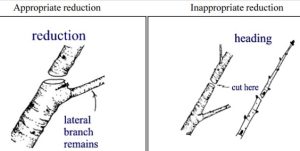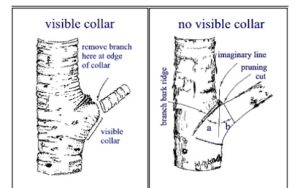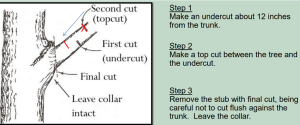Florida’s summer season is great for beach days, hikes, and visiting your favorite theme park. But let’s not forget, we are officially in hurricane season. The weather during this time can be a challenging time for gardeners and landscapers. Although the most active months of the season are August and September, the Atlantic hurricane season starts June 1st and lasts to November 30th. The good news is that there are steps you can take to prepare and protect your garden, home, and family.
Pre-Hurricane Preparation
- Assess Your Plants:
- Evaluate your garden and identify which plants are most vulnerable to strong winds.
- Be ready to move smaller or delicate plants indoors or shelter them in a garage, during a storm.
- Trim back any overgrown branches and foliage to reduce wind resistance. Prune back plants that are close to the house.
- Clear gutters and make sure they’re firmly attached and make sure storm drains are not clogged with debris.
- Have a qualified arborist evaluate your trees for hazards. Remove dead branches and palm fronds, and dead trees and plants.
- Secure Objects:
- Bring in or secure potted plants, hanging baskets, yard art and decor, patio furniture, grills, and other loose objects.
- Ensure pots are heavy enough to withstand wind or lay plants flat behind a hedge close to the foundation if you don’t have a garage.
- Irrigation Systems:
- Secure any above-ground irrigation components.
- Remove hoses from exposed areas.
- If you have a sprinkler system, turn it off and ensure that valves are closed.
- Consider using a surge protector for any electronic irrigation controls.
- Rain Barrels:
- Disconnect rain barrels from gutters.
- Move empty barrels to a secure location. Or, if the barrels are not completely full already, fill them all the way to prevent them from blowing away.
Pruning Trees
Ideally, you should not prune more than 20% of a mature tree or 33% of a young tree. Large cuts are stressful to trees, so it is important to prune them properly. It is best to start pruning trees and shrubs when they’re young to promote structural strength. That being said, avoid pruning for appearance, the desired look might compromise the structural integrity of the tree. which can cause problems later in the tree’s life. This becomes especially important during hurricane season. Whether you do the job yourself or hire a company to do it, it is important to know proper pruning techniques. For help finding an arborist, click here.
Pruning Properly
There is certainly a proper way to prune trees. You or a certified arborist should follow the proper techniques when pruning trees. Read more about proper pruning here.

When to Prune
Think ahead when preparing your trees for the season. Prune to remove dead or damaged branches and for minor shaping any time of year. For major pruning jobs, it is best to prune the plant when it goes dormant (if it does), this is usually in the wintertime. For the health of the tree it would be more ideal to prune every two or 3 years rather than all at once.
Read more about proper pruning techniques here: https://hort.ifas.ufl.edu/woody/stem-reduction.shtml.
Where to Prune
To anchor the branch to the trunk, the trunk supports the branch at the base with what is called the branch collar. The idea is to cut outside of the branch collar to preserve the health of the tree. To help visualize where to make the cut, picture a vertical line that divides the branch from the trunk where they join at the base. Cut 45° from the line AWAY from the trunk.
Small branches can be pruned in one step near the trunk, just above the branch collar.

To properly cut large branches, follow this 3-step branch removal process:
-
- Locate the place on the branch that is 1/3 of the way from where the base of the branch connects to the trunk. Start the cut from underneath the branch and stop at the center, making sure the cut does not go all the way through the branch. You should have a cut that goes halfway through the branch from underneath at this point.
- Find a spot further past the first cut away from the truck and make a second cut all the way through the branch. These steps prevent the branch from tearing the trunk, which wounds the tree and invites the potential for disease to develop in the tree.
- At this point you should have a long stub connected to the trunk left, with the cut from the first step still on the branch. Cut the branch from the trunk without damaging the trunk tissue. Do not cut the branch collar where it connects to the trunk.

Read about how to (or how not to) prune palm trees in preparation for stormy weather.
During the Hurricane
While it’s critical to prepare ahead of time, during the hurricane itself, the best advice is to stay safe and indoors. Avoid going outside at all until the storm has passed.
Post-Hurricane Recovery
After the storm has cleared, take time to assess your garden, it will likely need maintenance.
- Clean Up Debris:
- Identify any hazards, debris and branches that can be dangerous if tangled in power lines. Always assume power lines are still “live” and stay clear of them.
- Uprooted plants may affect underground utilities and/or irrigation systems.
- Clear away any fallen branches, leaves, and other debris.
- Irrigation Check:
- Inspect your irrigation system for any damage. Look for leaks or broken components, and repair as needed.
- After a hurricane, heavy rains can sometimes lead to flooding, so monitor soil moisture levels to avoid over-watering.
- Watch for Pests and Diseases:
- Post-storm conditions can encourage pests and diseases. Keep an eye out for any infestations and treat them promptly to avoid further damage to your garden.
For more detailed information, contact your local University of Florida Extension Office.
Have a question?
Follow us!
On Gardening Solutions
- Cleaning Up After a Hurricane
- Preparing Trees for Hurricanes
- Restoring Trees After a Storm
- Tree Risk Assessment
- Trees That Can Withstand Hurricanes
More from UF/IFAS
- How to Minimize Damage in the Florida Landscape
- Selecting Coastal Plain Species for Wind Resistance
- Selecting Tropical and Subtropical Tree Species for Wind Resistance
- Hurricane Preparation Practices for Fruit Trees
- Trees and Hurricanes website.
Resources from .Gov
- Hurricanes.gov — National Hurricane Center
- Hurricane Prep Tips from FNGLA https://bit.ly/46gu0y0
- FSA Disaster Assistance Programs https://bit.ly/4480Gb3
- FSA Website https://www.fsa.usda.gov/
- Find Your Local Extension Office https://sfyl.ifas.ufl.edu/find-your-local-office/
Create a Hurricane Plan for:
- Your Family: https://www.floridadisaster.org/family-plan/
- Your Business: https://www.floridadisaster.org/business/
 4
4
